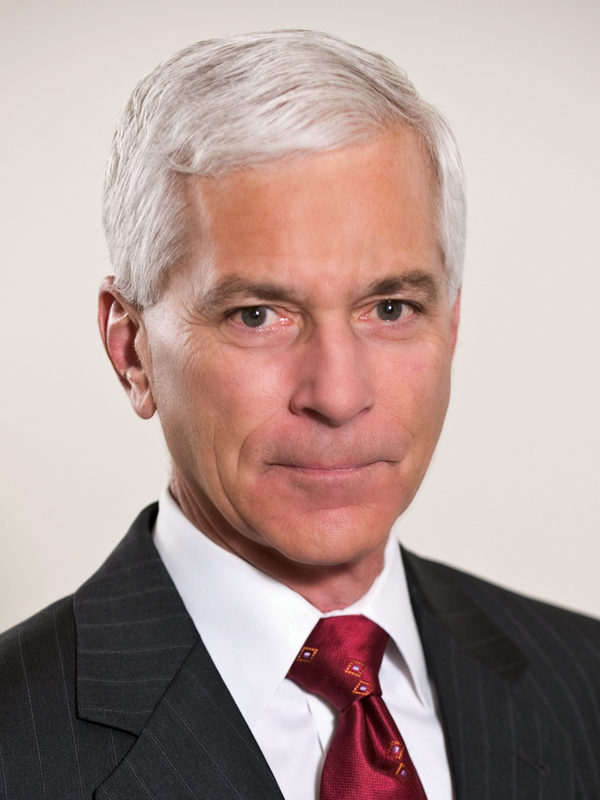
is president and CEO of NACUBO.
jwalda@nacubo.org
At the core of every higher education institution is its mission—its guiding principles, its fundamental purpose—that we all commit to fulfill. Indeed, the rich diversity of our colleges and universities springs from the sheer range of such missions.
Scan a selection of mission statements, and you’ll find many an inspiring declaration. Some champion research and discovery pursuits that inspire creativity while benefiting the public. Others embrace inherent values such as preparing students for leadership and lifelong learning and expanding access to underserved populations.
But how well are institutions holding to their missions in today’s upside-down environment? The economic climate, in particular, is a catalyst for recurring tuition hikes, continuing public pushback on college costs, and soaring student debt and default rates. Taken together, these forces have put in question even the value of a college education itself.
While we can easily point to data that demonstrate the broad societal benefits a postsecondary education affords and the critical role it plays in shaping our country’s future, we must not forget that how we communicate that return on investment is critical—particularly to external audiences that may not fully understand the value of higher education. We need to highlight the heart of the matter—that higher education’s value is reflected in the successful students who can transition into concerned citizens, ready to contribute to the betterment of our society and the world.
External Pressures
We can strengthen our argument by reminding our stakeholders about why we do what we do. That’s part of the thinking behind this year’s double issue of Business Officer magazine, in which we examine the many ways institutions manage to stay true to their essential purpose.
It’s not an easy task, as colleges and universities wrestle with often-contradictory demands:
- Providing facilities that attract sufficient enrollment while public outcry over tuition costs continues to mount.
- Attempting to trim budgets, as state and federal regulations demand more and more reporting data by which to measure performance.
- Balancing the demands for spending on athletics with spending on academics.
- Deciding whether to maintain internal control or outsource programs and services so as to preserve resources.
- Responding to student demonstrations calling for divestment of fossil fuel allocations from the endowment portfolio, even in states where support for clean energy runs counter to the dominant industry.
Covering central aspects of the higher education conundrum, articles in this issue describe the tension between necessary change and unwavering central mission; transformation and tradition; purpose and perpetuity.
Practicality and Perspective
First up is the nature of the college-to-career connection. As author Karla Hignite asserts in the introduction to her two articles for this issue, the fundamental goal of higher education hasn’t changed. “Yet, even as colleges and universities remain true to their mission of preparing students to engage life beyond the learning laboratory, a newer role for higher education leadership is to make explicit the intrinsic value of collaboration, analytical thinking, and strong communication skills—among the softer outcomes of an effective postsecondary education that are prized by employers across all industries and sectors,” she writes.
Higher education institutions are working to “infuse the curriculum with practical work-related experiences and to guide students in the art of translating and applying their academic expertise to any number of employment options that await them,” Hignite writes. Her second article is focused on the impact career development centers have in fulfilling an institution’s mission.
It is this intersection between student education and workforce preparation that has inspired a liberal arts institution in Texas to find a creative solution: introduce students to their career options well before their undergraduate studies are behind them. Austin College near Dallas recently launched its Gateways Initiative, a multiphase effort that connects students in programs such as medicine, health care, law, and accounting with graduate and professional programs across the country.
“A quality liberal arts education fosters critical thinking and reflection, written and oral communication skills, problem-solving abilities, leadership, and adaptability,” Austin College President Dr. Marjorie Hass said in announcing Gateways. “But some wonder whether a liberal arts degree opens doors. This program answers those questions with a resounding ‘Yes.’”
The college-to-career investment Austin College is making in its students reminds us of the importance of regularly demonstrating and articulating our value and making the case for support in the face of increased scrutiny from Washington and the public.
Sharing in Solutions
As a business officer, you have a critical voice in shaping the financial and administrative decisions that keep your institution aligned with its mission. To sharpen the skills you need for your task, I invite you to join us in Seattle for the NACUBO 2014 Annual Meeting, July 19–22. As we gather in the Pacific Northwest under the theme “Scaling New Heights,” we will explore new ideas and engage in important conversations. You’ll be able to return to your campus with fresh perspectives and new energy.
Those of you not able to attend the annual meeting in person can take advantage of our new VIRTUAL: Annual Meeting, which we will make available for viewing on our Web site. Beginning August 4, you can access several recorded sessions from Seattle. Look for more details on the site under the Distance Learning tab.
We developed both the annual meeting offerings and this issue’s articles with you in mind—to support your work, inform your leadership, and help you get to the heart of the matter: keeping your institution vital, strong, and true to its purpose.
JOHN WALDA is president and CEO of NACUBO.



